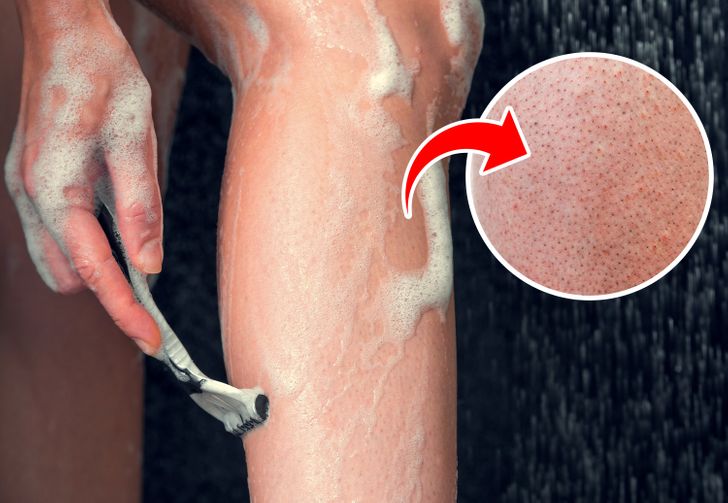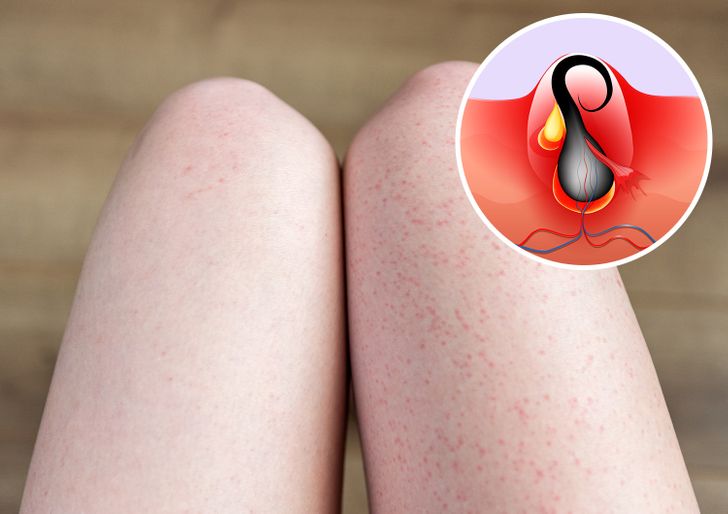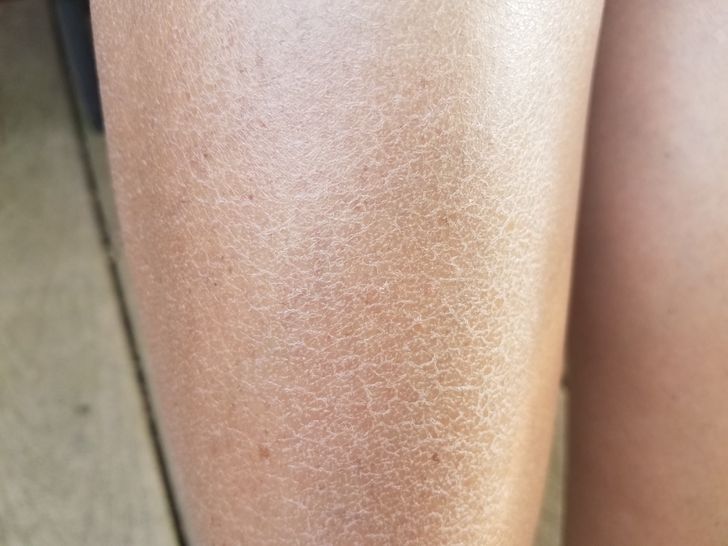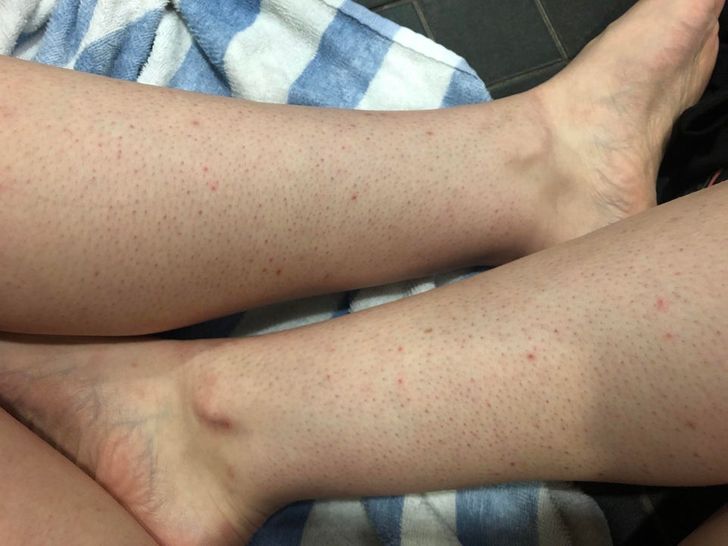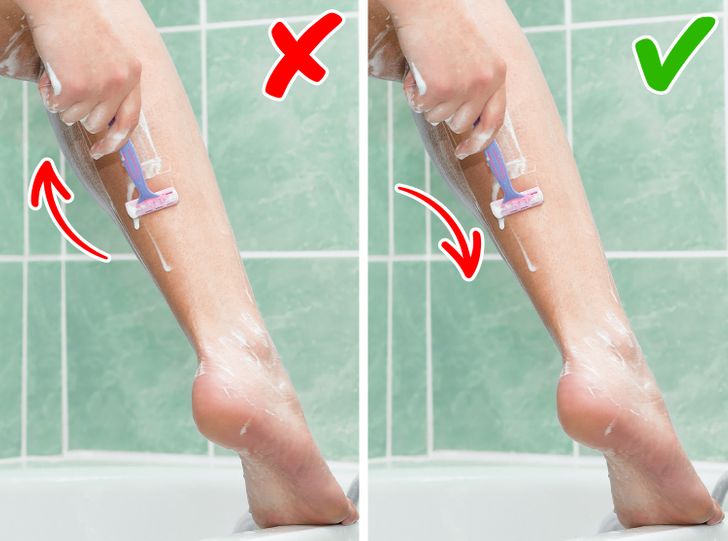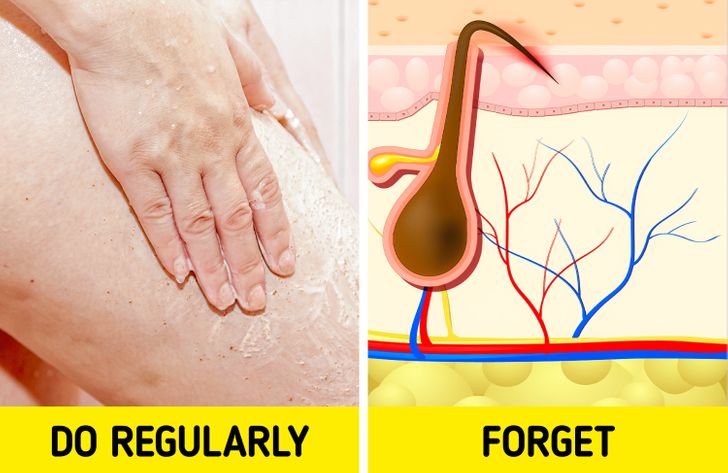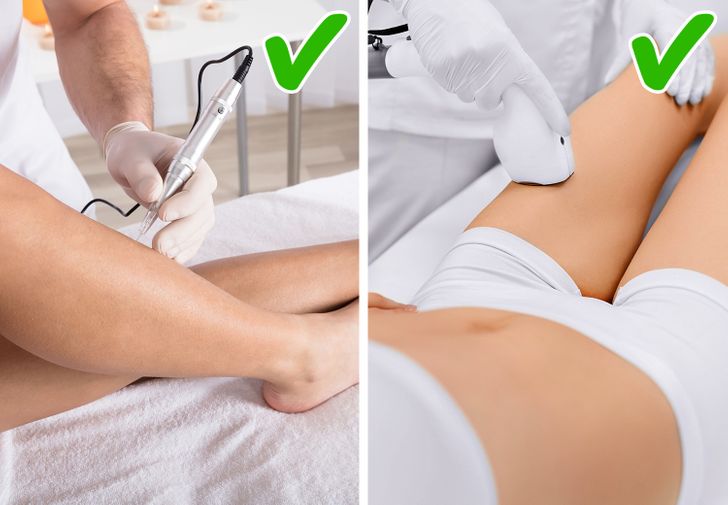So under "shaving the right way" Does that mean you have to push your knife? but it doesn't cut this way...??
What Causes Strawberry Legs and How to Get Rid of It
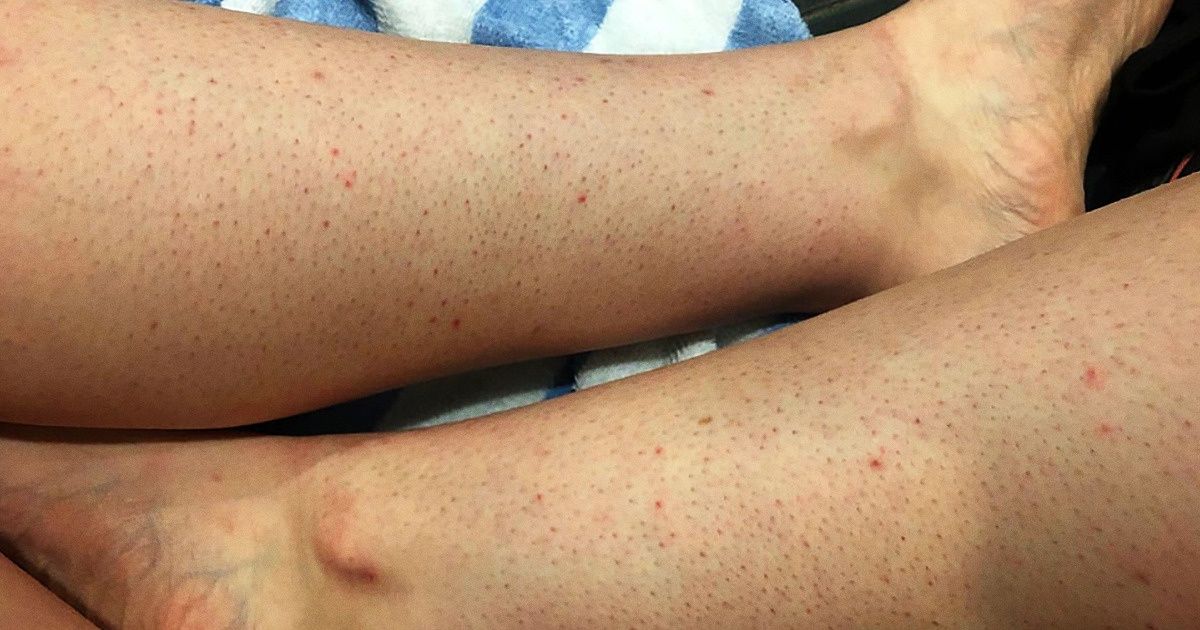
Many people struggle with blackheads and enlarged pores, not only in their T-zone, but also on their legs. This common condition is called strawberry legs, because of the reddish skin and the small dark spots that resemble the seeds of a strawberry. These spots are hair follicles or enlarged pores that contain a mixture of oil, bacteria, and dead skin. When this is exposed after shaving, air comes into contact with the oil, and it oxidizes and becomes dark.
Strawberry legs are not usually itchy or painful, but they can surely cause a person to be embarrassed. We at Bright Side have done research to find out what may cause strawberry legs and what can we do to get rid of this condition.
Shaving
Although “strawberry legs” is considered a genetic condition and occurs most often in those with thick body hair, shaving is one of the main reasons for this annoying condition. If you’re shaving with an old razor or without shaving cream, razor burn can result in irritated skin. In response to the irritation, the skin around the hair follicle darkens and black dots appear on your legs.
Folliculitis
Folliculitis is a common skin condition in which hair follicles become inflamed. It has many forms and can result in the appearance of strawberry skin. A mild form of folliculitis is caused by razor bumps. This leads to ingrown hairs and may be what’s causing the appearance of strawberry legs.
Dry skin
Although overly dry skin does not cause pores to darken, it makes you more vulnerable to developing razor burn and irritation. Dryness of the skin also makes dark seed-like spots more visible. The strawberry legs appearance develops more easily when your skin lacks moisture.
Keratosis pilaris
Keratosis pilaris is a common skin condition that creates the appearance of dry patches and tiny bumps, usually on the upper arms, thighs, cheeks, or buttocks. It is caused by the buildup of keratin, and forms a plug that blocks the opening of the hair follicle, which can result in a strawberry-like skin. Keratosis pilaris appears when the skin is too dry, and is more common in those who live in a climate with low humidity or who swim often in swimming pools that contain a lot of chemicals.
Ways to get rid of strawberry legs
Shaving the right way
Before you shave, wet your skin and hair to soften it and apply a shaving cream or gel. Don’t forget to rinse after each swipe of the razor and make sure you change your blade regularly to minimize irritation. Shave in the direction that the hair grows in to help prevent razor bumps and burns that can lead to the “strawberry legs” appearance.
Exfoliating regularly
Professional treatment
If home remedies aren’t effective, you can try medical treatment options for strawberry legs that include electrolysis and laser therapy. Electrolysis uses electricity to target the irritated hair follicles and stop the hair from growing. It prevents ingrown hairs and can reduce the likelihood of strawberry legs. Laser therapy is a safe hair removal method that targets multiple hair follicles at the same time.
Have you ever experienced strawberry legs? Do you know of any more ways to reduce this issue?
Comments
I think this is just a lazy illustration, I'm pretty sure you don't have to push your knife ?
Right, it makes no sense to me ??
Related Reads
Vera Wang, 73, Just Flaunted Her Toned Figure in a Revealing Outfit That Left Everyone Speechless

12 Celebrities Who Remind Us That Being Ourselves Is the Hottest Accessory

What 14 Iconic Movies Would Look Like With the Original Casting

10 Early Signs That Your Partner Will Break Your Heart

20 Pics That Prove Having a Child Is a Risky but Love-Filled Adventure

6 Gestures That Show a Man Is in Love With You and 6 Signs That Show He’s Using You

My MIL Mocked Me at My Husband’s Birthday Party—I Gave Her a Brutal Reality Check

10 Times People Had to Face Cruel Reality

I Thought My Son’s Wedding Was Perfect, but My DIL Says My Dress Ruined Everything

18 Guests Who Forgot They Weren’t the Main Character at Someone Else’s Wedding

15+ Raw Stories About Jealousy That Can Leave You Speechless

14 Mother-in-Law Moments That Became a Legendary Family Story

